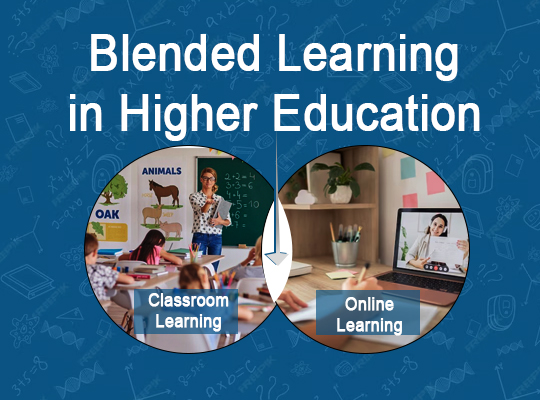
In recent years, the landscape of higher education has been undergoing a significant transformation, driven by advancements in technology and evolving pedagogical approaches. Blended learning, in particular, has emerged as a popular and effective method for delivering instruction in colleges and universities. By combining face-to-face instruction with online learning activities, blended learning offers students greater flexibility, engagement, and personalized learning experiences. In this blog, we’ll explore the concept of blended learning in higher education and compare it to other learning modalities such as hybrid learning, fully online learning, and traditional classroom instruction.
Blended learning, also known as hybrid learning, integrates traditional face-to-face instruction with online learning components. In a blended learning environment, students attend scheduled in-person classes supplemented by online learning activities, such as discussions, assignments, quizzes, and multimedia resources. This approach allows for greater flexibility in scheduling, access to a wide range of learning materials, and opportunities for interactive and collaborative learning. Blended learning also promotes student engagement and autonomy, as students have more control over their learning pace and can tailor their learning experience to their individual needs and preferences.
Blended learning represents a dynamic and innovative approach to higher education that combines the best elements of traditional face-to-face instruction with the flexibility and accessibility of online learning. By offering a hybrid learning experience that integrates both in-person and digital components, blended learning provides students with greater flexibility, engagement, and personalized learning experiences. While hybrid learning offers many benefits, it’s essential to recognize that different learning modalities, including fully online learning and traditional classroom instruction, each have their strengths and limitations. Ultimately, the choice of learning modality should be based on the specific needs and preferences of students, as well as the learning goals and objectives of the course or program. As higher education continues to evolve, blended learning will likely play an increasingly important role in shaping the future of learning and teaching.
